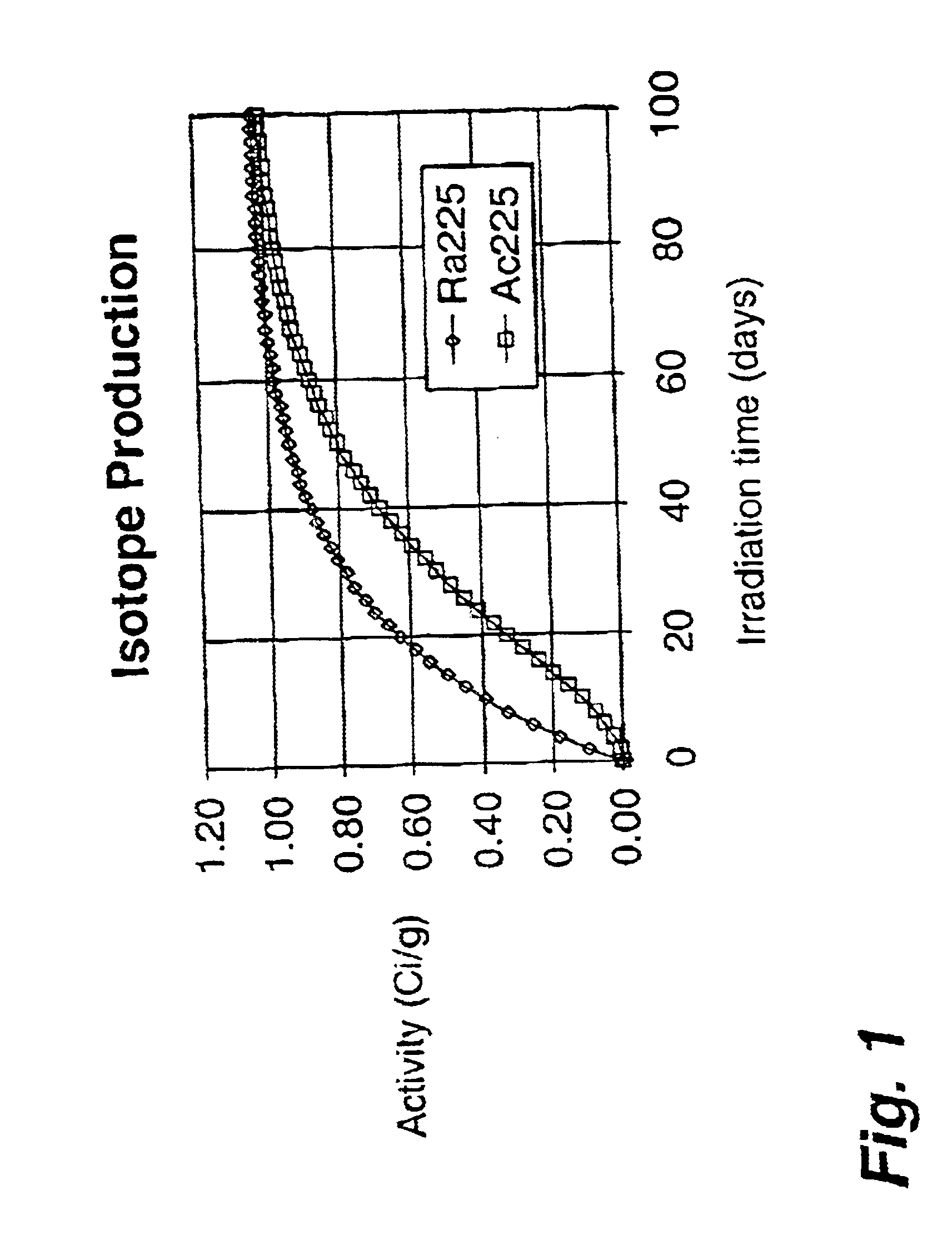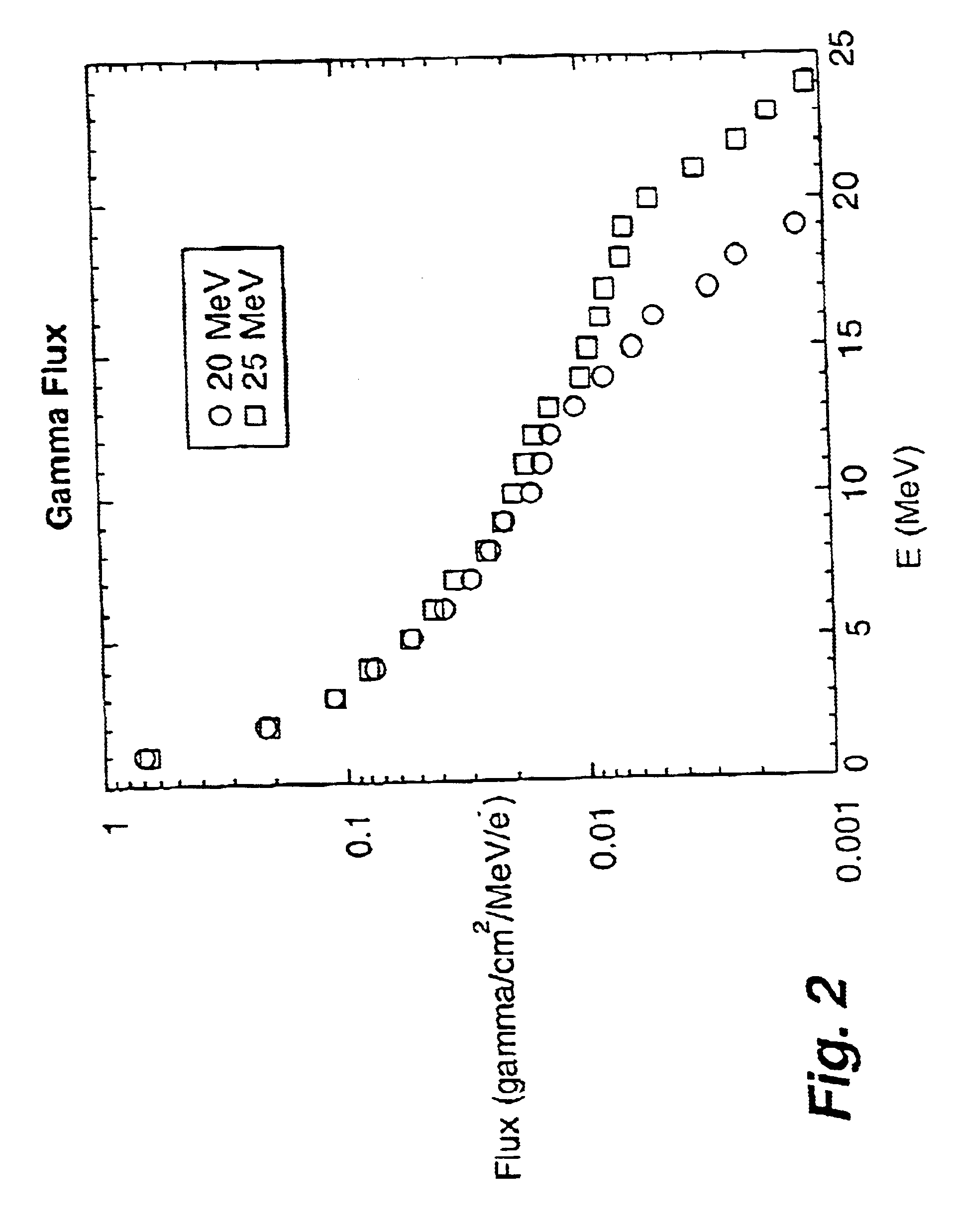Method of producing Actinium-225 and daughters
a technology which is applied in the field of preparation of actinium 225 and daughters, can solve the problems of invasiveness, collateral damage can be serious, and the disadvantage of being too specific, and achieve the effect of cost-effective and large production
- Summary
- Abstract
- Description
- Claims
- Application Information
AI Technical Summary
Benefits of technology
Problems solved by technology
Method used
Image
Examples
example 1
Preparing Converting Material
A milled Tungsten plate having the dimensions of 3 mm (width).times.3 mm (height).times.1 mm (thickness) is obtained. The plate is well sanded, washed with distilled water, and dried thoroughly.
example 2
Coating Radionuclide onto Converting Material
A Nickel-plating solution is prepared by mixing nickel chloride (40-60 g / l), nickel sulfate (240-300 g / l), and boric acid (25-40 g / l). The pH is adjusted to approximately 3.5 to 5.0.
The Tungsten plate, prepared as described above, is then placed into the Nickel-plating solution in an electroplating apparatus with a Platinum electrode and Nickel is electroplated onto the Tungsten plate. Operating conditions are: temperature of 30-60.degree. C., and current density of 2-7 A / dm.sup.2. Agitation is performed with air.
The resulting nickel-plated substrate is then placed into a Radium-226 dioxide plating solution and electroplated with Radium-226. Briefly, sufficient Radium-226 is dissolved in 8 molar NHO.sub.3 to form a 0.1 M Radium-226 solution. Cells for electroplating are constructed according to Krishnaswami and Sarin, (Krishnaswami, S., and M. M. Sarin (1976), Anal. Chim. Acta, 83, 143-156). A teflon stir bar is placed in the electroplati...
example 3
Bombarding Target
The target, as prepared above, is ready for bombardment with a high-energy electron beam.
The target is placed in the path of an electron beam in a linear accelerator operating at 10 kW, and bombarded with high-energy electrons. The current of the electron beam is set for about 500 microampere. The energy of the electron beam impacting the target should be about 25 MeV. The target is bombarded for approximately 20 days, at a distance of 50 cm from the beam source.
The theoretical production yield calculation results are given in FIG. 1, where the production activities of Radium-225 and Actinium-225 are given as a function of irradiation time for a 1.0 gram Radium-226 target and a 25MeV electron beam. The values shown in FIG. 1 were obtained using the results shown in Table I, FIG. 2, and FIG. 3. Table I and FIG. 2 present the gamma flux / spectrum produced by both 20 MeV and 25 MeV electrons. FIG. 3 gives the curve for the Radium-226 (gamma, n) cross-section as a functi...
PUM
 Login to View More
Login to View More Abstract
Description
Claims
Application Information
 Login to View More
Login to View More - R&D
- Intellectual Property
- Life Sciences
- Materials
- Tech Scout
- Unparalleled Data Quality
- Higher Quality Content
- 60% Fewer Hallucinations
Browse by: Latest US Patents, China's latest patents, Technical Efficacy Thesaurus, Application Domain, Technology Topic, Popular Technical Reports.
© 2025 PatSnap. All rights reserved.Legal|Privacy policy|Modern Slavery Act Transparency Statement|Sitemap|About US| Contact US: help@patsnap.com



